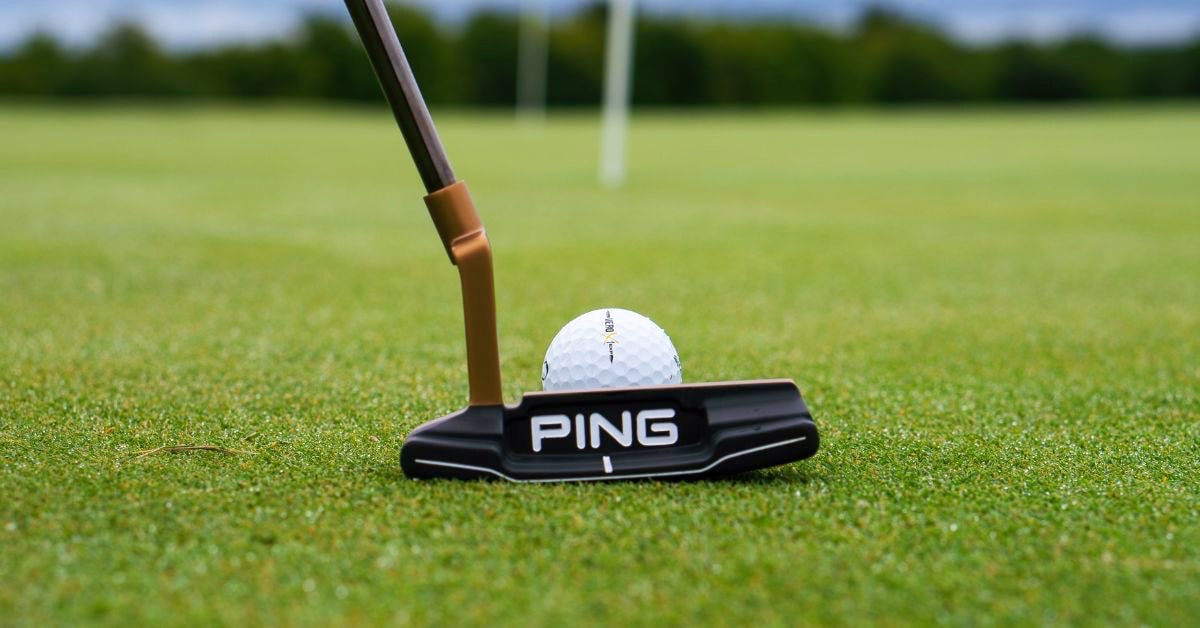What’s so hard about knocking the ball in the hole — right?
The fact of the matter is that there are thousands of putters suited for different putting strokes. I know from experience that the choice can be incredibly overwhelming!
In this article, you’ll learn about the different types of putters in golf. From the head shape and shaft length to the face design and hosel setup.
Most importantly, you’ll learn which golfer each type of putter is suited for. Ultimately, this will help you find the perfect putter for your unique stroke.
Types of Putters
There are two main types of putters: blade and mallet. However, this is just the head shape. Another thing to consider is shaft length, which varies based on height and putting stroke. Putter face design and material are also important variables, as well as the setup of the hosel.
When assessing types of putters, we can break them down into four key areas:
- Head shape
- Shaft length
- Face design
- Hosel setup
I’ll cover each area in detail in this article, with the aim of helping you understand which type of putter is best for your putting stroke. So, read on!
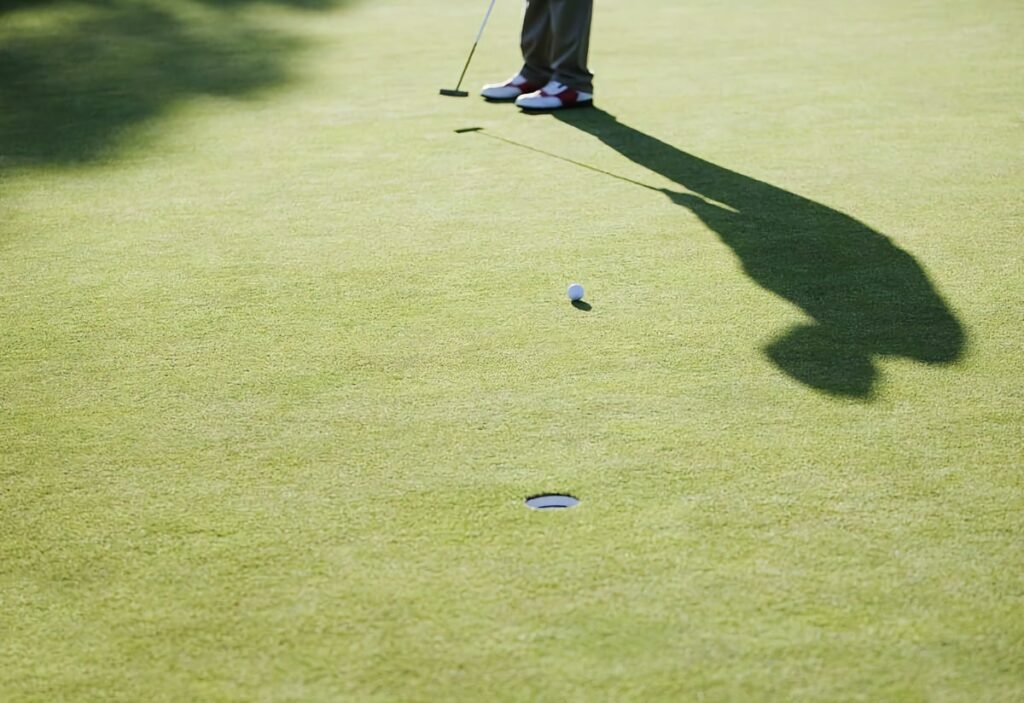
Putter Head Shapes
First, let’s look at the putter head shape design. Choosing the right putter head for your unique stroke can make a big difference to your putting.
While there are thousands of types of putters to choose from, there are just two basic head shapes: blades and mallets.
Blade Putters
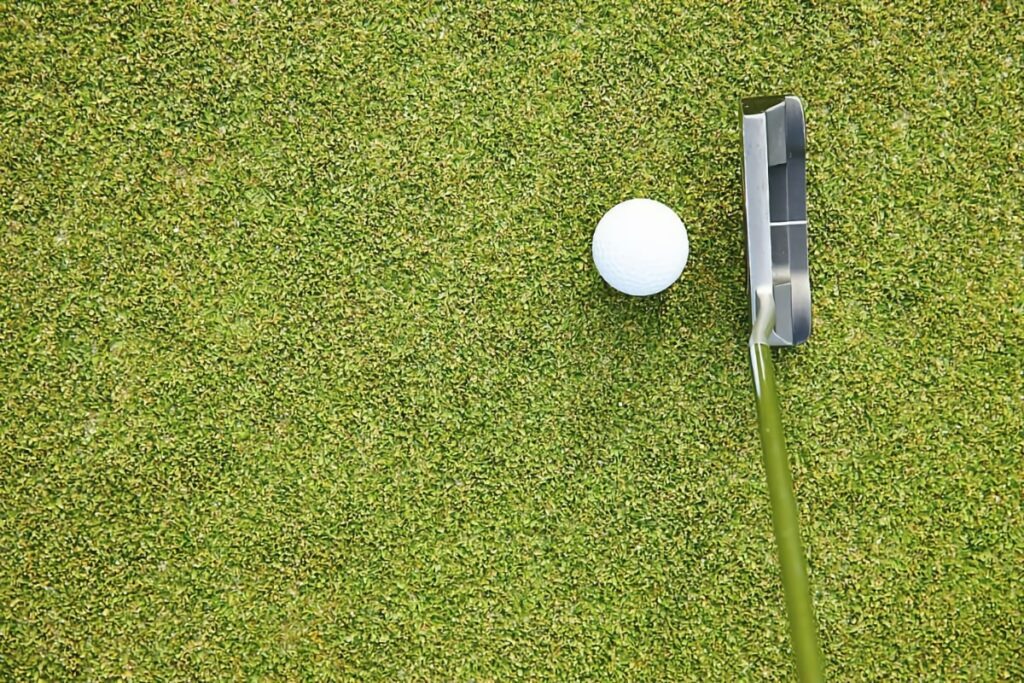
Blade putters have a simple and traditional head shape, featuring a long and slim profile that has been recognized in the game of golf for centuries.
Usually, blade putters are heavily toe-weighted. This means more weight is positioned at the toe of the club head. With the weight distributed toward the toe, the putter’s face naturally rotates from an open to a closed position as you stroke through the ball.
Therefore, blades are often favored by golfers with an arc in their putting stroke.
Blades are a weapon of choice for many tour professionals, including Tiger Woods, Jordan Spieth, and Collin Morikawa. In fact, 38 percent of the top 50 use blades.
One of the most successful blade putters over the last 20 years is the Scotty Cameron Newport Putter, which features tungsten sole weights for extra stability in the stroke.
How to Putt With a Blade Putter
- Use an arc-type putting stroke
- Manually guide the putter head through the ball
- Aim to hit the center of the putter face
Blades aren’t as dominant as they once were. With advances in club technology, mallet putters have become increasingly common, promising enhanced forgiveness.
Mallet Putters
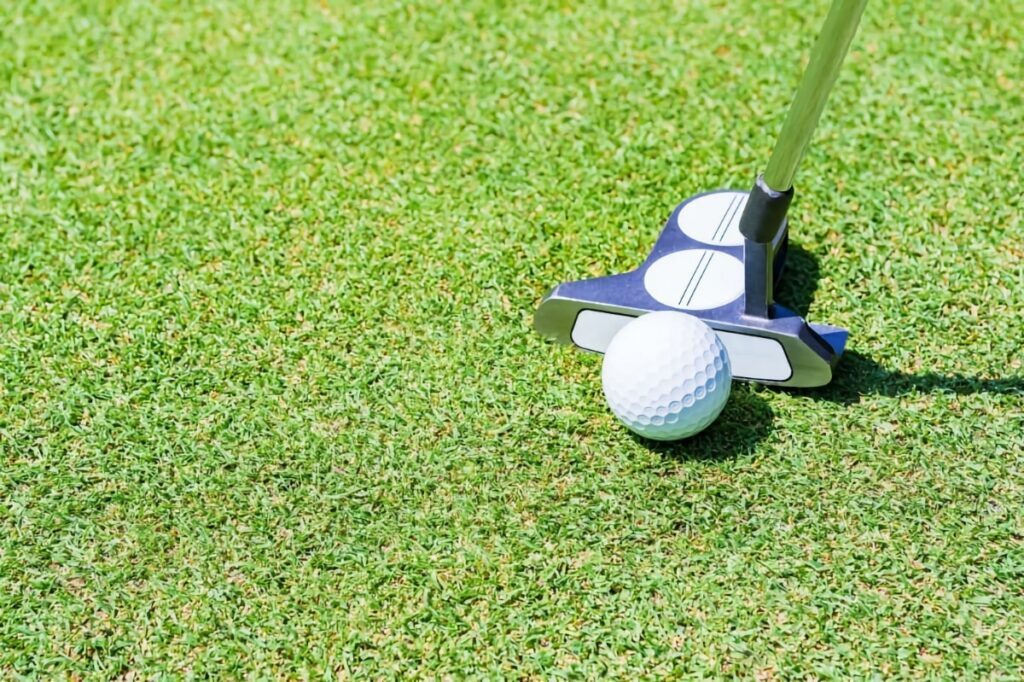
Mallet putters are more modern and have larger heads, sometimes as wide from face-to-back as they are from heel-to-toe.
Generally, mallet putters are known to be more forgiving than blades. This is because they are larger, with greater weight distribution to help stabilize your putting stroke.
Mallet putters perform particularly well with off-center hits. The distribution of weight results in a larger sweet spot, making them very appealing to amateur golfers.
Typically, mallet putters are best suited for golfers who are looking for a bit more forgiveness, with a straight-back and straight-through putting stroke.
On tour, mallet putters have become increasingly popular with the likes of Rory McIlroy, Scottie Scheffler, and Jon Rahm carrying one in the bag. Now, 62 percent of the top 50 use mallet-style putters, compared to just 44 percent in 2018.
Perhaps the most influential mallet putter is the Odyssey Triple Track Putter, which uses the vast space on the top of the club head as a visual alignment aid. It’s available in a variety of head-shape designs, offering excellent stability and high MOI.
How to Putt With a Mallet Putter
- Use a straight back, straight-through putting stroke
- Let the club and gravity do the work
- Make use of the design visuals on the putter
Ultimately, your choice of putter comes down to personal preference. Consider going for a putter fitting, where your putting stroke will dictate the ideal putter for you.
In the video below, MyGolfSpy discusses blade vs mallet putters:
Putter Shaft Lengths
Traditionally, putters have had fairly standard shaft lengths — between 32-36 inches.
However, in the early 2010s, extra-long putters became increasingly popular. Several pros — including Adam Scott — opted for ‘belly putters’ that could be anchored to the body. This made it easier to make a stable putting stroke under pressure.
At one stage, four out of six major winners had used a belly putter. With the integrity of the sport at risk, the USGA introduced Equipment Rule 14-1b in 2016. This banned the use of anchored putting strokes, removing the need for extra-long putters.
Today, there are two main categories of putter shaft lengths: standard and armlock.
Standard Putters: 32-25″

Standard putters have a length of between 32 and 35 inches, accommodating a range of player heights and capable of fitting a variety of putting strokes.
Most putters sit within this range. Working with the natural flow of your stroke, standard putters allow your top hand to sit about an inch from the end of the putter grip.
The standard putter length dates back several decades — Bobby Jones won 13 major championships in the 1930s with a 33½-inch putter nicknamed Calamity Jane.
Putter Length Guidelines
Use the following list as a guideline when choosing a standard putter length:
- 32 inch – 5′ to 5’2″
- 33 inch – 5’3″ to 5’8″
- 34 inch – 5’9″ to 5’11”
- 35 inch – 6′ and up
It’s important to find out which putter length is best suited to you. Having to hunch over or stand too upright can negatively impact the consistency of your putting stroke.
Armlock Putters: 36-42″
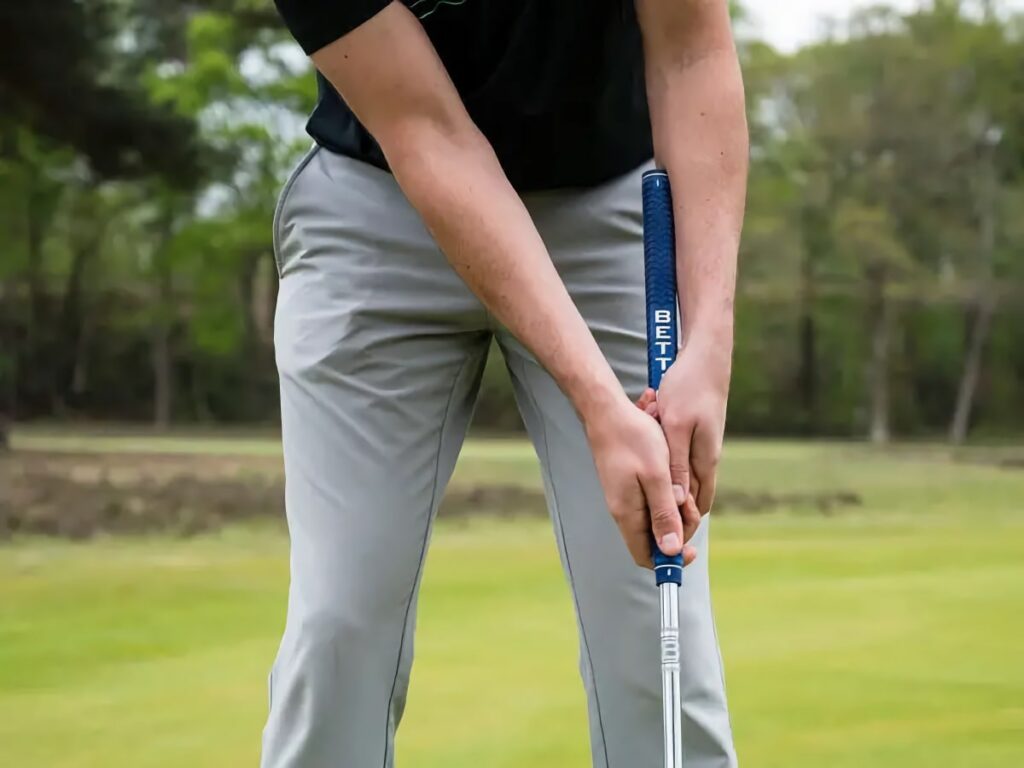
Armlock putters — also known as counterbalance putters — have an extended shaft putting the length at between 36 and 42 inches.
While the USGA Rules prevent you from anchoring the putter against the body, you are allowed to brace the putter grip against your forearm for extra stability.
Armlock putters have a longer grip than usual, which enables you to brace the putter against your leading forearm for better consistency throughout the stroke.
Several tour pros use the armlock method, with Bryson DeChambeau being perhaps the most famous example. In fact, numerous pros have adopted the system as a short-term fix when they’re struggling with a standard putter, including Xander Schauffele.
Check out the video below by Alex from GolfMagic, where he compares standard and armlock putter lengths for the amateur golfer:
Putter Faces
Next, let’s address the importance of the putter face.
There are two main types of putter faces: milled and insert. Each type uses different materials, with varying qualities that produce a different sound and feel.
Milled Face
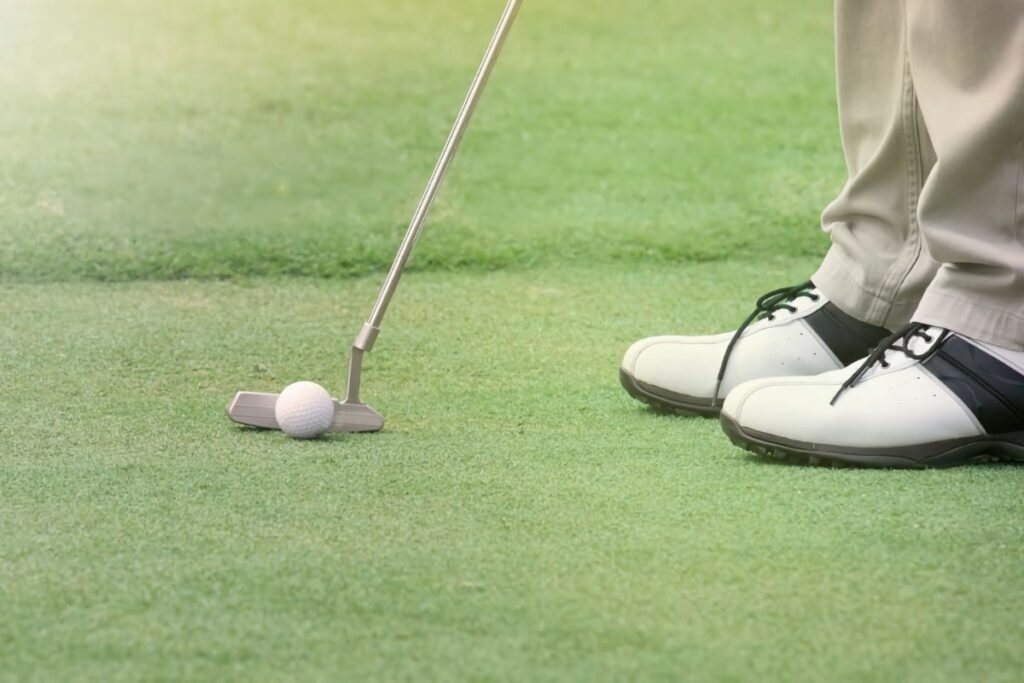
A milled face putter is when the entire putter head has been cut — or milled — out of a solid block of metal. The feel at impact is relatively hard.
Sound is an important aspect when assessing the ‘feel’ of different types of putters.
Due to the natural hardness of the metal face, milled putters often produce a relatively loud sound as the face strikes the ball — particularly on longer putts.
PRO FACT: Ping are one of the most successful manufacturers of milled putters. The name ‘Ping‘ was chosen because of the sound the ball made when it hit the metal putter face.
Milled putters are best for golfers who prefer audible feedback with their putting. You can instantly hear the contact, so you can tell if you’ve struck the middle of the face.
Often, manufacturers will cut a complex milled pattern into the putter face. This aims to give the putter unique sound and feel qualities. For this reason, you should always test out several milled putters to find which suits you best, before making a purchase.
Face Insert
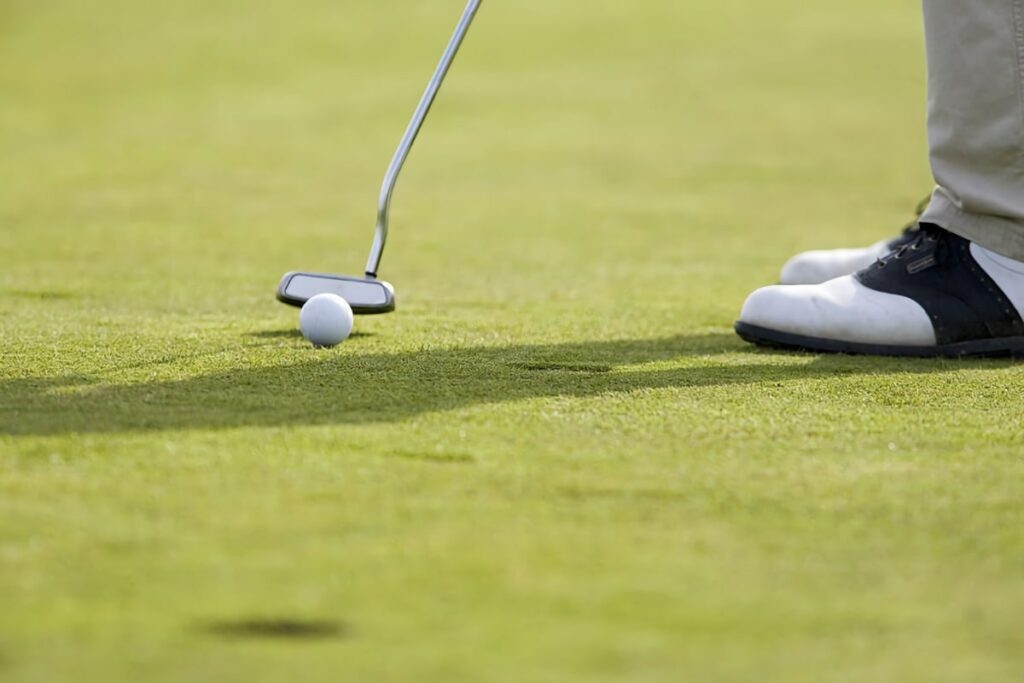
A face insert putter uses a piece of composite material set into the face. This promotes a softer feel and sound, typically used with mallet putters.
Composite materials, such as plastic, are used for face inserts. This produces a softer feel against the ball while deadening the sound at impact.
Also, face insert putters can be more forgiving than milled putters. This is because the face insert redistributes weight to the heel and toe of the putter.
Face insert putters are best suited for golfers who prefer softer-feeling putts, with a quieter sound and better forgiveness for off-center strikes.
As with milled putters, manufacturers will often mold various groove designs to make the ball react differently off the face. However, putter face inserts may need replacing over time with extended use, as they aren’t as durable as a metal face.
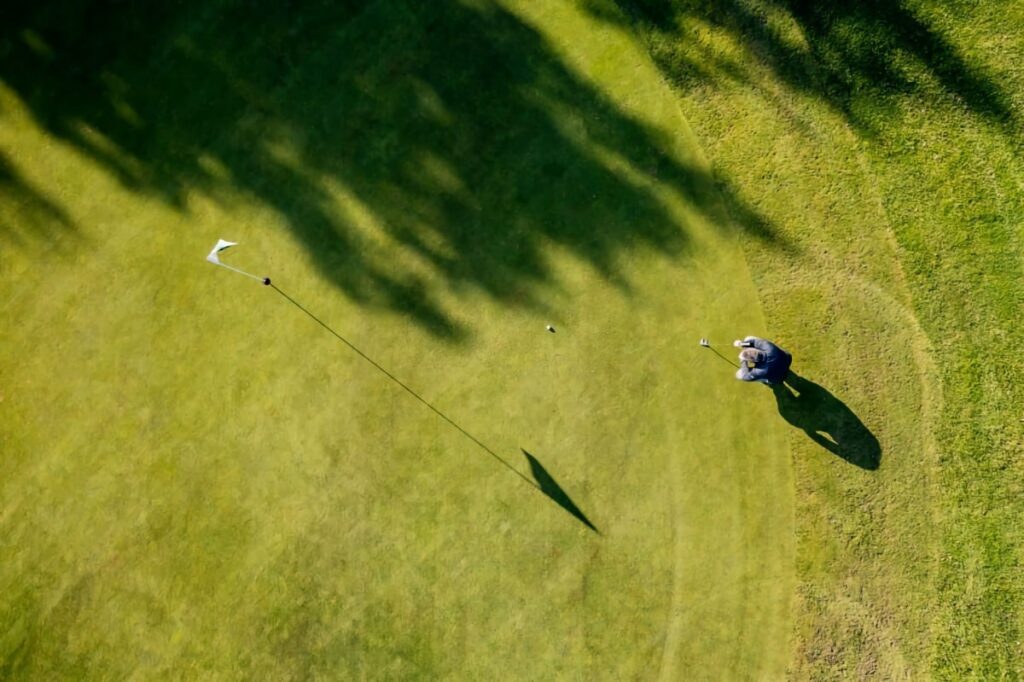
Hosel Setups
Another important consideration when comparing types of putters is the hosel setup.
The hosel is where the shaft connects to the putter head. Hosel setup can influence weight distribution, alignment, and ultimately your performance on the greens.
There are three main hosel types on putters:
- Heel-shafted
- Center-shafted
- Offset
Heel-Shafted Putters
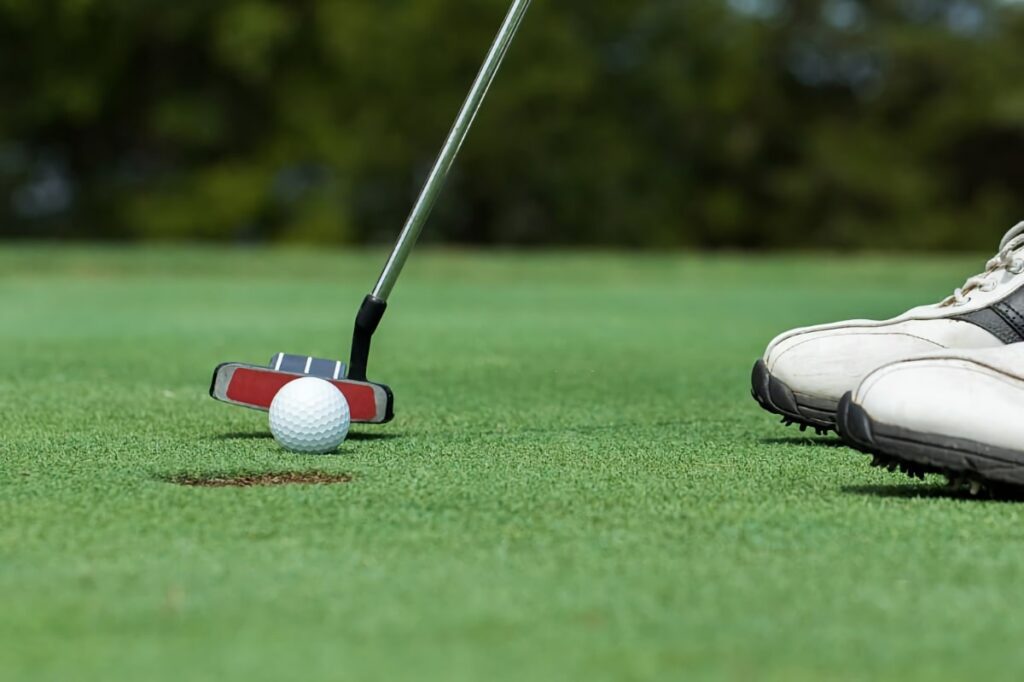
Heel-shafted putters are when the shaft connects to the heel of the putter head. They are extremely common and found on all different types of putters.
Most of the time, heel-shafted putters are toe-balanced. This ensures the putter face remains square at impact, rather than opening at the point of contact.
Due to their versatility, heel-shafted putters are suitable for all golfers. However, when toe-balanced, they are best suited to players with an arc putting stroke.
Center-Shafted Putters
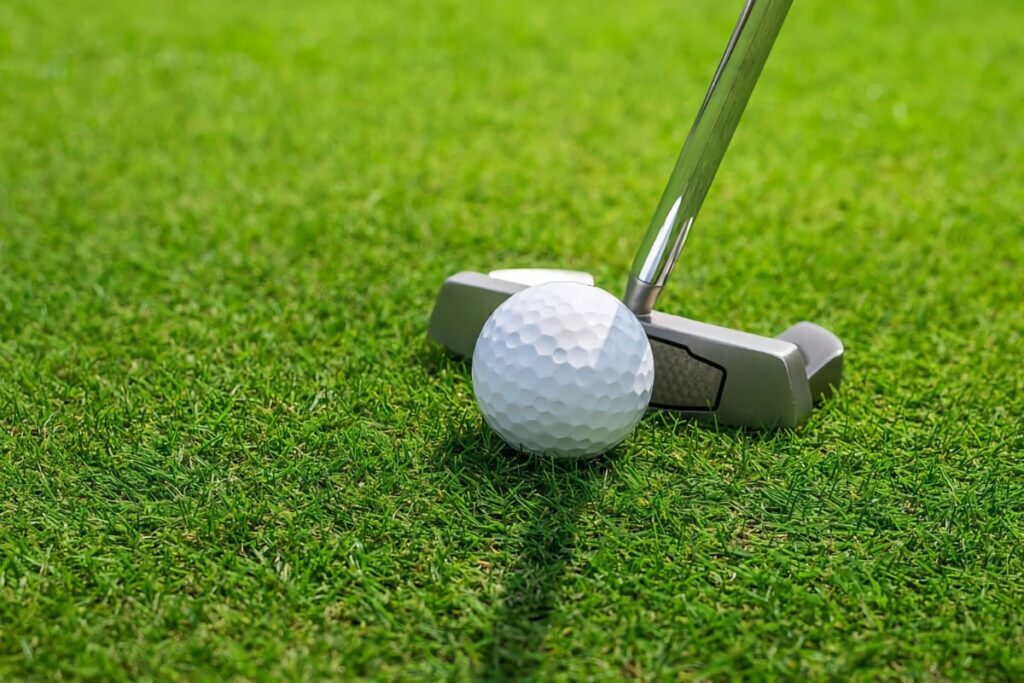
Center-shafted putters are when the shaft connects to the center of the putter head.
With center-shafted putters, the hosel is aligned with the sweet spot on the face. This means it’s best suited for golfers who set up with their eyes directly over the ball.
Often, they work best for players with a pendulum-style straight-back and straight-through putting stroke, where everything stays aligned with the target.
Offset Putters
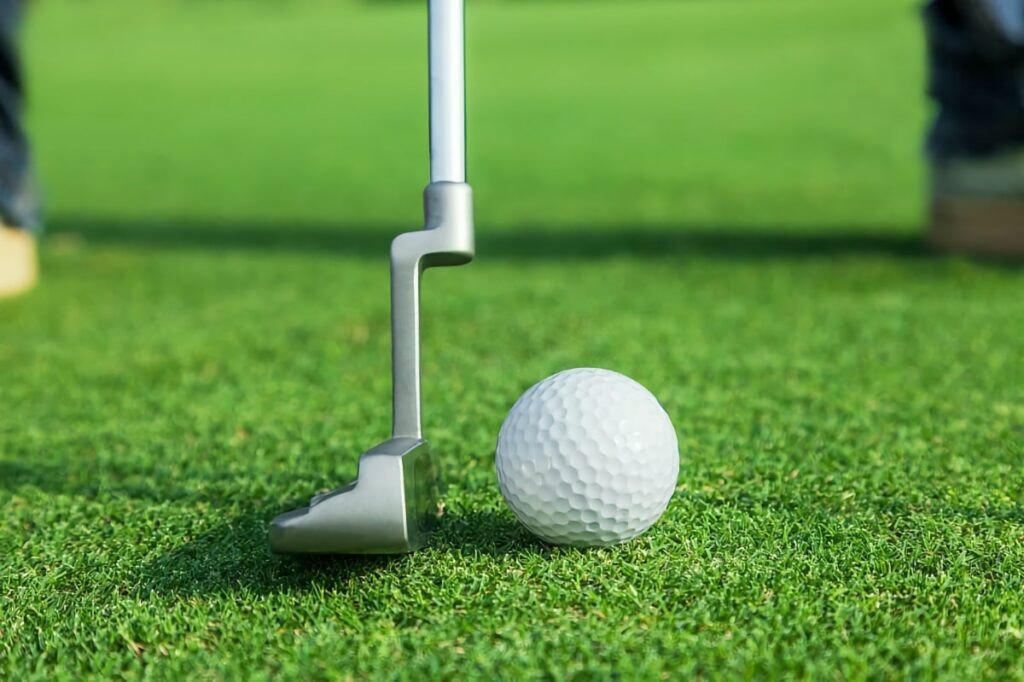
Offset putters have the putter face set behind the line of the shaft. This encourages you to square up the natural face angle at impact while helping with alignment.
Having the base of the shaft sit forward of the putter face can have great benefits for golfers who struggle with pushing their putts to the right of the hole.
Many golfers struggle with leaving the putter face open at impact. Offset helps with this by allowing the putter head to catch up with the stroke, keeping the face straight at the point of impact. As a result, this causes more putts to start on line.
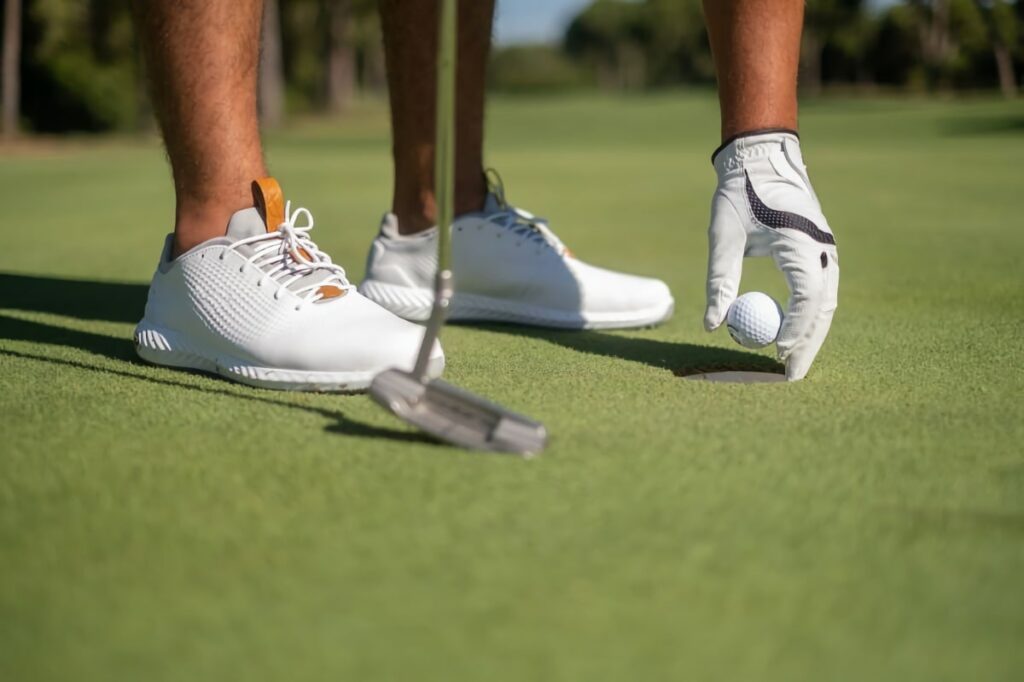
Conclusion
In summary, here are the things to consider when choosing between types of putters:
- Head shape — blade or mallet
- Shaft length — standard or armlock
- Face design — milled or insert
- Hosel setup — heel-shafted, center-shafted, or offset
The putter’s head shape is likely to have the greatest effect on your putting. However, each variable will influence the feel, sound, and performance of a putter.
Ultimately, you should test out several different putters before making a decision. This will help you find one that works for your unique putting stroke.
If you’re looking for a new putter, check out Global Golf’s UTry Trial Program. It allows you to test out putters for 14 days before committing to buy. I’ve used it personally, and highly recommend the service if you’d like to try out several putters in your own time!

